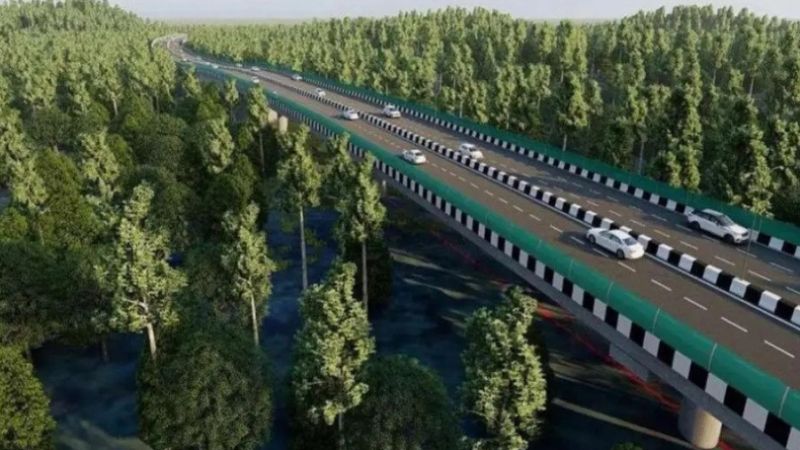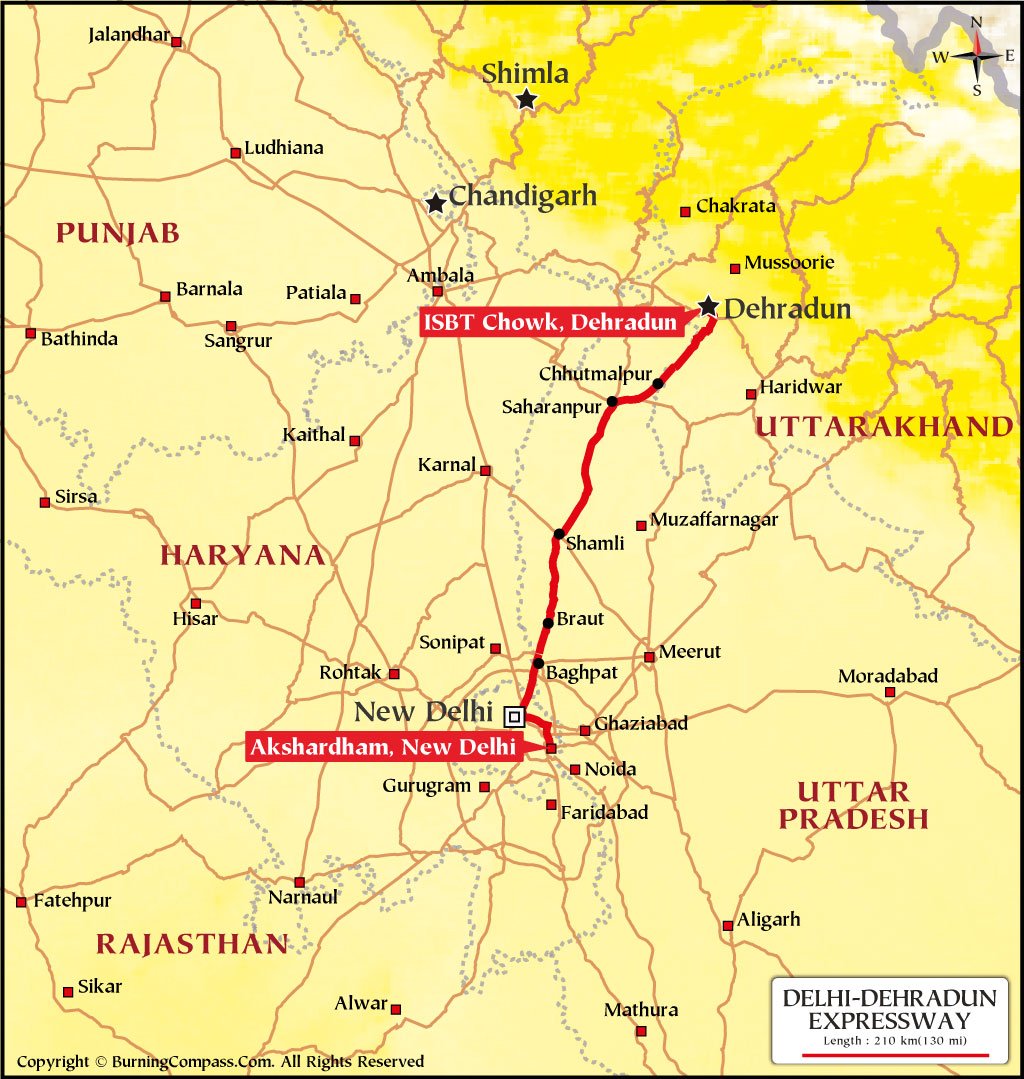
The Delhi Dehradun expressway is slated to open next month. This connective infrastructure project between India’s capital and Uttarakhand’s capital connects Akshardham Temple in Delhi with Baghpat in Uttar Pradesh, reducing travel time.

The first phase of the Delhi-Dehradun Greenfield Access-Controlled Expressway was initially supposed to be inaugurated by March 2024, but construction challenges due mainly to pollution in Delhi delayed it. Nevertheless, authorities are hopeful that all parts of the expressway will be operational early next year, marking an important milestone for Indian infrastructure development.
Delhi Dehradun Expressway Route Map
The route stretches from Akshardham in Delhi through Shastri Park, Khajuri Khas, Mandola Baghpat, Khekra Shamli, and Saharanpur and is being built in three phases. The first segment will link Akshardham with the Kundli Palwal Expressway. Currently, travelers between Delhi and Dehradun take the Delhi-Meerut Expressway, a journey that typically takes about five hours. When the new road opens up fully this time would be cut more than half –down to two and a half hours door-to-door– so commuters can expect seamless travel.

First-phase construction on this 210 km long greenfield access-controlled superhighway between the national capital city (Delhi) and the state capital city (Dehradun) is nearing 90-95% completion rate. Signage installation at the sirens & message boards site along with expansion joints onsite constructions are still ongoing while meantime making other necessary arrangements for such infrastructure components improvements, the carriageway has already been constructed with one eye set on operational commencement before the end of June this year even as works continue near final 20 km section close proximity surrounding Dehradun district area to complete required tasks as quickly possible towards opening full-length stretch at the earliest convenience following successful completion.
The most distinguished feature of this expressway is its 31.6 km long elevated stretch, which includes an 18-kilometer portion in the first phase. The elevated section starts from Shastri Nagar and ends at Loni in Delhi, bypassing Geeta Colony, Khajuri Khas, Mandola, and Panchgaon areas densely populated with residents before leveling off near Baghpat, Saharanpur & Uttarakhand bound traffic for free flow.
Another unique attribute of this project is that it would have Asia’s longest wildlife corridor built under it to accommodate the safe passage of animals below the highway thus mitigating any possible human-animal conflict. While vehicles zoom past overhead; elephants among other majestic creatures can roam undisturbed within their habitats beneath; creating harmony between manmade infrastructure and natural surroundings.
Finally, the opening of the Delhi-Dehradun Expressway promises to be a game changer for India’s infrastructure sector. It will not only improve connectivity but also cut down travel time between cities thus underscoring sustainability as well as coexistence with nature principles that drive national development agenda. As we prepare ourselves for what lies ahead let us embrace these changes wholeheartedly since they signal brighter tomorrows not just for one generation alone but many more generations yet unborn whose lives may depend upon such initiatives coming into being sooner rather than later in our shared history.




One Comment